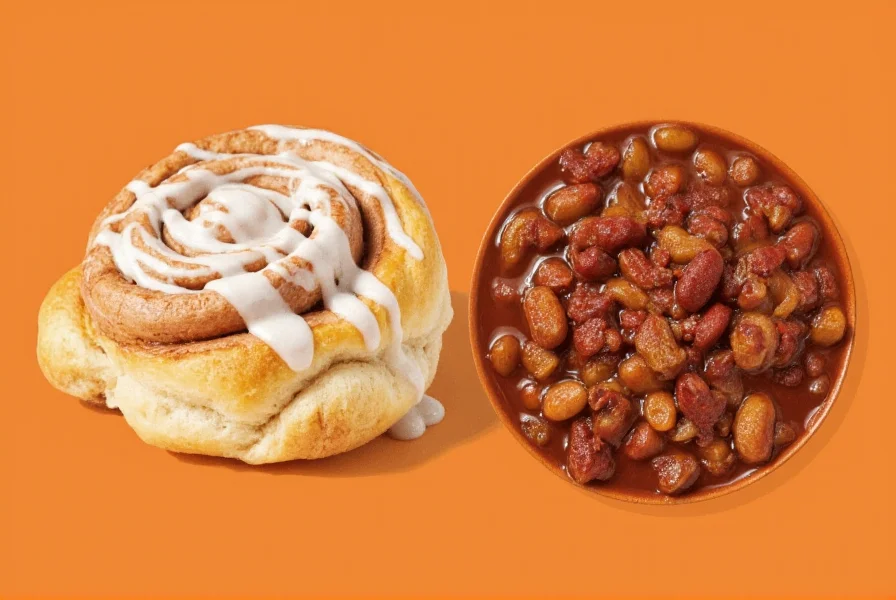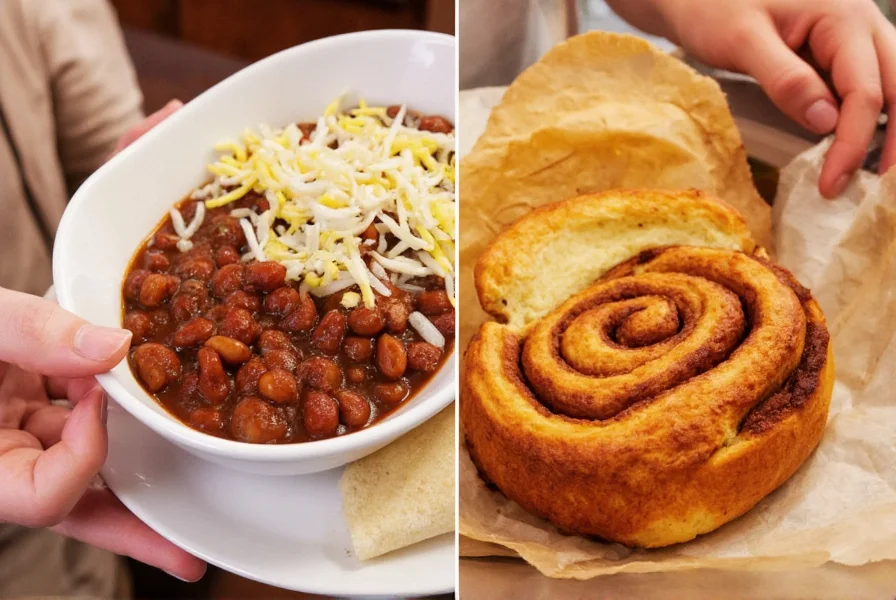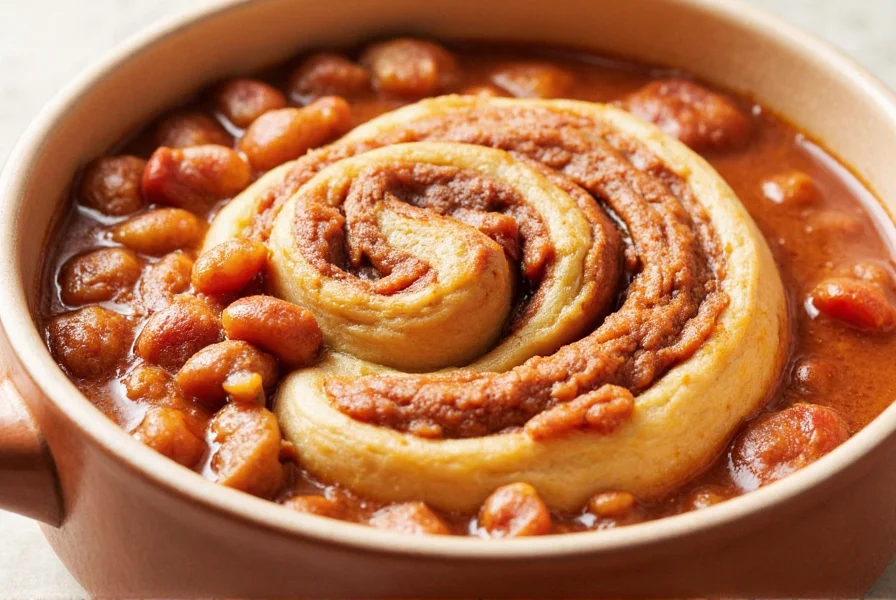While the pairing of cinnamon roll and chili might seem unusual to those unfamiliar with Midwest culinary traditions, this sweet-savory combination represents a fascinating cultural fusion that has stood the test of time. The practice originated with Scandinavian immigrants who settled in the Upper Midwest during the 19th century, blending their baking traditions with American comfort food.
The Cultural Origins of Cinnamon Roll and Chili
This distinctive food pairing emerged from the practical needs of Scandinavian immigrants who brought their baking expertise to America's heartland. In regions with harsh winters like Minnesota and Wisconsin, hearty meals were essential for survival. The combination of protein-rich chili (often made with locally available beef or venison) with sweet cinnamon rolls provided balanced nutrition while satisfying both hunger and comfort food cravings.
Historical records show that Lutheran church suppers in the early 20th century frequently featured this pairing, cementing its place in regional food culture. The tradition continues today at community events, school lunches, and family gatherings throughout the Midwest, particularly in areas with strong Scandinavian heritage.
| Region | Chili Style | Cinnamon Roll Variation | Common Serving Occasion |
|---|---|---|---|
| Minnesota | Meat-heavy, minimal beans | Cardamom-infused dough | Church potlucks |
| Wisconsin | Bean-based with venison | Buttercream frosting | School lunch programs |
| Northern Iowa | Three-bean vegetarian | Gluten-free options | Community festivals |
The Science Behind Sweet and Savory Pairings
Food scientists explain that the cinnamon roll and chili combination works because of how our taste receptors process contrasting flavors. The capsaicin in chili peppers creates a warming sensation that's effectively balanced by the cool sweetness of cinnamon rolls. This creates what culinary experts call "flavor layering"—where each component enhances the other without overwhelming the palate.
Research from the University of Minnesota's Department of Food Science shows that carbohydrate-rich foods like cinnamon rolls can actually enhance the perception of savory flavors in chili. The study found that participants consistently rated chili as "more flavorful" when consumed alongside a sweet pastry compared to when eaten alone.

How to Experience Authentic Cinnamon Roll and Chili
For those interested in trying this regional specialty, authentic preparation follows specific guidelines that have been passed down through generations. Traditional Midwest cinnamon roll and chili meals feature:
- Chili preparation: Made with ground beef or venison, minimal beans (or none in Scandinavian-inspired versions), and a balanced spice profile that's flavorful but not overwhelmingly hot
- Cinnamon roll characteristics: Made with yeast-raised dough, generous cinnamon-sugar filling, and typically topped with cream cheese or vanilla frosting
- Serving method: Both components served hot, often with the cinnamon roll placed directly on the plate alongside (not on top of) the chili
When properly executed, this midwest cinnamon roll chili tradition creates a complete meal experience where the sweet notes of the pastry complement rather than compete with the savory depth of the chili. The contrast between temperatures (hot chili, warm pastry) and textures (smooth chili, soft roll) adds to the overall sensory experience.
Modern Interpretations and Regional Variations
While traditional preparations remain popular, contemporary chefs have begun experimenting with creative variations of this classic pairing. Some restaurants now offer innovative takes such as:
- Cinnamon roll sliders topped with small portions of gourmet chili
- Chili-infused cinnamon rolls with subtle heat in the dough
- Dessert-inspired chilies incorporating cinnamon and other baking spices
Despite these innovations, purists maintain that the authentic experience requires keeping the components separate on the plate. This allows diners to consciously choose when to alternate between sweet and savory bites, creating a personalized flavor journey throughout the meal.

Why This Unusual Food Pairing Endures
The continued popularity of cinnamon roll and chili as a meal combination speaks to its deep cultural significance in Midwest communities. Unlike fleeting food trends, this pairing has maintained relevance for over a century because it serves multiple purposes:
- Nutritional balance: Provides protein, carbohydrates, and fats in a single meal
- Cultural identity: Connects communities to their Scandinavian heritage
- Practicality: Both components can be prepared in large batches for community gatherings
- Sensory satisfaction: Creates a complete flavor experience that satisfies multiple taste preferences
Food historians note that similar sweet-savory combinations exist in other culinary traditions worldwide, from Japanese miso soup with sweet rice cakes to Mexican chocolate mole with savory elements. The cinnamon roll and chili pairing represents America's unique contribution to this global phenomenon of complementary flavor contrasts.
Frequently Asked Questions
Why do people eat cinnamon rolls with chili in the Midwest?
This tradition originated with Scandinavian immigrants in the Upper Midwest who combined their baking traditions with American comfort foods. The pairing provides balanced nutrition while satisfying both sweet and savory cravings, making it practical for harsh winter months when hearty, complete meals were essential.
Is cinnamon roll and chili a traditional Scandinavian dish?
While Scandinavians have strong baking traditions featuring cinnamon rolls (known as "kanelbulle" in Sweden), the specific pairing with chili is uniquely American. Scandinavian immigrants adapted their baking customs to incorporate locally available ingredients like chili, creating this distinctive Midwest food tradition that doesn't exist in modern Scandinavian cuisine.
How should cinnamon rolls and chili be served together?
Traditionally, they're served side by side on the same plate but kept separate. The chili is served hot in a bowl or directly on the plate, while the cinnamon roll is placed alongside, often with the frosting still warm. Purists recommend alternating bites rather than mixing the components, allowing the contrasting flavors to complement each other throughout the meal.
Where can I find authentic cinnamon roll and chili meals?
The most authentic experiences are found in community settings throughout Minnesota, Wisconsin, and northern Iowa. Look for Lutheran church suppers, school lunch programs in rural districts, and community festivals during fall and winter months. Some restaurants in these regions also feature this pairing, particularly those specializing in Scandinavian-American cuisine or Midwest comfort food.
Are there vegetarian or vegan versions of this pairing?
Yes, modern adaptations include vegetarian chili made with beans, lentils, or mushrooms, often featuring the same spice profile as traditional meat-based versions. Vegan cinnamon rolls using plant-based butter and milk alternatives have also become popular. These adaptations maintain the essential sweet-savory contrast while accommodating different dietary preferences, particularly in northern Iowa where vegetarian versions have gained popularity.











 浙公网安备
33010002000092号
浙公网安备
33010002000092号 浙B2-20120091-4
浙B2-20120091-4